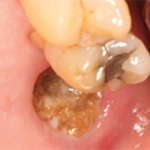Zoledronic Acid
Of note, Dr. Saag referenced data that raises the possibility that doses of less than 5 mg of zoledronic acid, an IV bisphosphonate, and/or administration of the medication less frequently than the general practice of once per year may still be effective for the treatment of osteoporosis.
In 2002, Reid et al. published a phase 2 clinical trial that lasted for one year and enrolled postmenopausal women who were then randomized to receive placebo or one of six treatments with IV zoledronate. For the active treatment groups, total doses of zoledronate included 1 mg, 2 mg and 4 mg doses and the interval of administration could be at three, six or 12 months. Overall, the effects of each treatment on surrogate markers (i.e., bone health, bone turnover markers and bone density) were superior to those of placebo and similar to one another in the treatment arms.5 A 5 mg annual dose was ultimately chosen to be studied in the subsequent phase 3 trial. However, the phase 2 study indicates that this may not be the only dose and interval at which the medication is effective.
Indeed, Dr. Saag noted that, in certain lower risk patients who he sees in clinical practice, he will sometimes dose IV zoledronic acid less frequently than once per year.
Alternatives
Dr. Saag discussed the twists and turns in the story of denosumab, an inhibitor of receptor activator of nuclear factor kappa-B ligand (RANKL), as an osteoporosis treatment.
In 2009, Cummings et al. published the FREEDOM trial, which demonstrated that administration of twice yearly subcutaneous denosumab for 36 months was associated with reduced risk of vertebral, nonvertebral and hip fractures in postmenopausal women with osteoporosis.6 However, a post-hoc analysis of the trial and its extension study showed that the rate of vertebral fractures increased in patients who discontinued denosumab and that a majority of these patients had multiple vertebral fractures.7 These data led to the recommendation that, in patients who discontinue denosumab, the transition to a different antiresorptive agent should be made quickly.
Dr. Saag agreed with this concept and proposed IV zoledronic acid as a potential treatment option. He also stated that it’s important to discuss with patients the potential risks of starting and then stopping denosumab therapy. It’s essential to have a long-term plan in mind when initiating treatment.
Romosozumab
Next, Dr. Saag discussed romosozumab, a humanized monoclonal antibody sclerostin inhibitor that is approved by the U.S. Food & Drug Administration for the treatment of postmenopausal women with osteoporosis.


